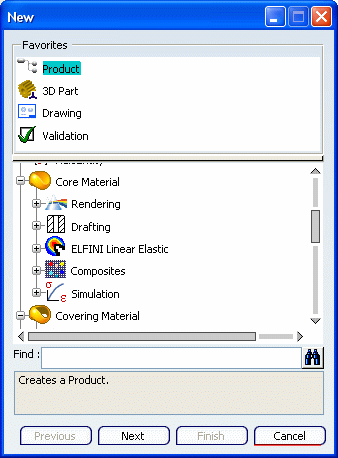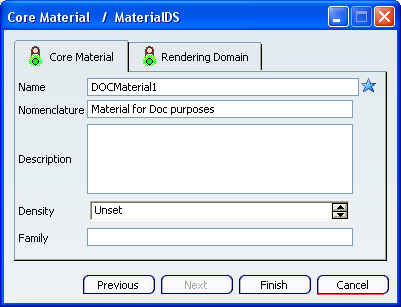Select .
The Version 6 PLM
Wizard guides you through the PLM object creation process.
The New - Step1 - PLM Type dialog box appears.
Search for the material category by using either of the
following methods:
- Type Material in the Find
box, and click
 .
.
- Expand the All Types node, and locate the Material category.
Select the material type to be created. The two
following material types are available:
- Core Material specifies the constitutive material of an object.
- Covering Material specifies a coating of material on the
exterior surfaces of an object.
For further discussion about core and covering materials, see
About Applying Materials.
Select the material domain to be created.
The
following domains are available:
- Rendering: adds visualization properties to a material (available
both for core and covering materials).
- Drafting: adds hatching pattern properties to a material
(available for core materials only).
- ELFINI Linear Elastic: adds physical
properties to a material for Structural Analysis simulations (available for core materials only).
- Composite:
adds geometric properties to a layered composite material (available for core
materials only).
- Simulation: adds physical
properties to a material for DesignSight simulations (available for core materials only).

Click
Next.
The material creation dialog box
appears.

In this dialog box you must specify the PLM attributes for the
material and the domain. The attributes available in this dialog box
as well as the name of the dialog box can be customized by the PLM administrator.
Material attributes appear under the first tab.
Attributes for the selected domain appear under the second tab; in
this example, the domain attributes tab corresponds to Rendering.
Optional: Under the first tab, modify the
Name and Nomenclature attributes, and
enter a description.
Optional: Under the domain
attributes tab, modify the Name attribute if
necessary, and enter a description.
Click
Finish.
The Material Editor workbench opens.